#tudor queens
Explore tagged Tumblr posts
Text






Initially, the princess's life would have been a simple one, based in the old palace of Placentia at Greenwich. Nothing remains now of the buildings Elizabeth would have known there as a child, which would be demolished and rebuilt by her future husband, Henry VII.
⎯ Amy Licence, Elizabeth of York: The Forgotten Tudor Queen
#back with this kind of EoY post hehe#also if anyone wonders which movie i get these scenes from#it's called La passion Béatrice#perioddramaedit#perioddramagif#elizabeth of york#EoY#julie delpy#fc: julie delpy#fancast: julie delpy#tudor history#tudor queens#historical women#historicwomendaily#historicaledit#historical dramas#historyedit#tudoredit#*gifs#*gifset#userrias#userriasgifs
149 notes
·
View notes
Text



In October, I decided to challenge myself to produce a miniature illustrated painting each day of the month inspired by the Tudor court and the medium of portrait miniatures.
Lucas Horenbout was a Flemish artist and founding artist of the tradition of painting miniatures. He moved to England in the mid-1520s and worked as the court miniaturist to King Henry VIII from 1525 until Horenbout's death. He captured many of the iconic figures of the era and also taught the art of illumination to Hans Holbein, who would go on to eclipse him as the most famous court artist of that era.
A portrait miniature is a miniature portrait painting, usually undertaken in gouache, watercolour, or enamel. Portrait miniatures evolved out of the techniques required to craft the intricate illustrations and borders of illuminated manuscripts, and became popular among 16th century elites. From the middle of the 18th century, the trend spread across the rest of Europe remaining highly popular until the development of photography in the mid 19th century.
For my challenge, I used black ink, water colours, and 300gsm textured watercolour paper. I bought and thrifted some amazing vintage frames, mostly 2 or 3 inches high. Some are over fifty years old, so consequently there are marks and scratches on them but I think it adds to the charm and overall feel of the pieces as historic miniatures.
I'm really proud that I completed the challenge - and all 31 paintings - and wanted to share a few with you here!
You can see them all over on my website 🖤
#tudor history#the tudors#tudor queens#anne boleyn#henry viii#thomas cromwell#jane seymour#katherine howard#katherine parr#anne of cleves#katherine of aragon#elizabeth i#lady jane grey#mary i#george boleyn#thomas wyatt#jane rochford#tudor art#wolf hall#becoming elizabeth#my lady jane
62 notes
·
View notes
Text
random thought bc I've been listening to Six on repeat: the queens claim that the only reason they're remembered is because of Henry, but would Henry be one of the most iconic and well-known English monarchs if not for them?
#like his defining trait is sorta 'bloke who had six wives who he treated pretty badly all told' plus the whole church of england thing#which arguably would have happened anyway in some sense since protestantism was sweeping europe but is generally credited to him wanting#a divorce whether thats accurate or not#yes he was quite charismatic etc but there were plenty of others who were too or at least interesting#like nobody talks about the guy who was Probably murdered in a framed hunting accident#or the one who was executed by having a red hot poker rammed up his arse#or the one who dies after gorging himself on strawberries and eel pie iirc#ok fine maybe i only remember the memorable daeths but you get the point#the six wives are what made henry viii significant is what i'm saying#via shitposts#six#six the musical#tudors#tudor queens#catherine of aragon#anne boleyn#jane seymour#anne of cleves#katherine howard#catherine parr#henry viii
304 notes
·
View notes
Text
Mary I being called "bloody Mary" to this day while she's literally the monarch who executed the least amount of people of the whole dynasty will never fail to make me angry
97 notes
·
View notes
Text




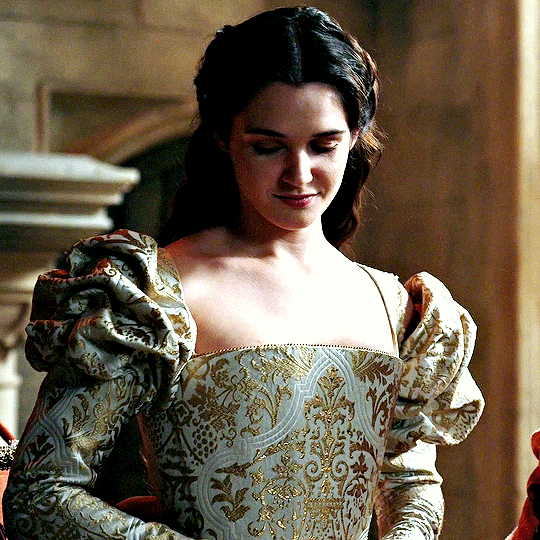
From Princess, to Queen, to Duchess
Mary Tudor (March, c. 1496; London, England - June, 1533; Suffolk, England) was an English princess, the third wife of King Louis XII of France and one of the two sisters of King Henry VIII. Mary was also the grandmother of Lady Jane Grey, who would become titular queen of England for nine days in 1553.
Mary’s father, King Henry VII, betrothed her to Archduke Charles —later Holy Roman Emperor, Charles V — in 1507. In 1514, however, political tribulations caused King Henry VIII to renounce such engagement and arrange a match between his beautiful, charming and yound sister and Louis XII, the sick and french monarch of 52. Since Mary was already in love with Charles Brandon, the first Duke of Suffolk, she made Henry promise that after Louis died she would be allowed to choose her next husband.
The marriage with the french king took place on Octouber of 1514, and Mary performed her role as wife and royal consort with kindness and dedication until he died on January of the following year. Before Henry or the new King of France, Francis I, could use her as a pawn in another political arrangement, Mary secretly wed Suffolk in Paris, probably in late February. Henry VIII was infuriated at the news, but eventually the pair regained the king’s favour, with Suffolk paying him a large sum of money and perhaps with the help and intercession of Cardinal Wolsey.Mary and Charles had four children, two daughters and two sons: ⇒ Henry Brandon (11 March 1516 – 1522); ⇒ Lady Frances Brandon (16 July 1517 – 20 November 1559), married to Henry Grey, 3rd Marquess of Dorset, and mother to Lady Jane Grey; ⇒ Lady Eleanor Brandon (1519 – 27 September 1547), married to Henry Clifford, 2nd Earl of Cumberland; ⇒ Henry Brandon, 1st Earl of Lincoln (c. 1523 – March 1534).
Mary had enjoyed unprecedented freedom during her teenage years at her brother's court. Just fourteen when her father, Henry VII died, she spent the next five years almost completely unchaperoned, encouraged to participate in every event, celebration and feast, each planned to display the opulence of the english royal family. She shared Henry's exuberance for spectacle and, for some time, was one of the central ladies of the court, admired and sociable. Like him, she loved dancing, masques, and parties; they were also very close, with the princess being the apple of the king's eye. It's rumored that Henry's famous warship, the Mary Rose, was named after both his favorite sister and his only daughter with Catherine of Aragon.
Upon her arrival in France, Mary was proclamed, by the Venetian Ambassador, to be "handsome and well favoured, grey-eyed; slight, rather than defective from corpulence, and conducts herself with so much grace, and has such good manners, that for her age of 18 years—and she does not look more—she is a paradise." She was particularly admired by her contemporaries for her long red hair, which she had inherited from the Plantagenet lineage through her mother, Elizabeth of York, who had also been an celebrated beauty.
After her second marriage, the Duchess of Suffolk lived a quiet life in the country, retired from court, although she had been know to have attended the famous Field of the Cloth of Gold at Guines, near Calais, in 1520. Often referred to as the French Queen, she was known to dislike Anne Boleyn and in defiance of her brother was to prove a firm supporter of her sister-in-law, Catherine of Aragon, in the matter of Henry VIII's annulment of his marriage to his first wife.
Mary visited London for the last time to celebrate the wedding of her eldest daughter, Lady Frances Brandon, to Henry Grey, Marquess of Dorset, in 1533. After suffering failing health for some years, Mary Tudor died on 25 June 1533 at the age of thirty-eight at Westhorpe Hall, Westhorpe, Suffolk, possibly of cancer. Henry VIII had requiem masses sung at Westminster Abbey for the repose of her soul and she was given a magnificent funeral, which her husband did not attend. Her body was interred at the Abbey of Bury St Edmunds. The Duke of Suffolk quickly remarried again, in that same year, to his fourteen-year-old ward, Katherine Willoughby (1519–1580), suo jure Baroness Willoughby de Eresby. Katherine had been betrothed to his eldest surviving son, Henry, Earl of Lincoln, but the boy was too young to marry, and Charles, to eager to add the heiress fourtune to his own.
#tudor dynasty#tudor queens#tudor history#tudor era#tudorqueens#the tudors#mary tudor#henry viii#elizabeth of york#charles brandon#tudor england#tudor period#tudor women#english royalty#house of tudor#medieval england#english history
52 notes
·
View notes
Photo



#This has been sitting in my drafts for like 6 years#not the images I would likely pick if I was making it today#Tudors#Tudor History#Tudor Era#Katherine of Aragon#Anne Boleyn#Jane Seymour#Anna of Kleeves#Katherine Howard#Katherine Parr#history#Women in History#Tudor Queens
4 notes
·
View notes
Text
ON THIS DAY - 14 October 1586
On This Day (14 Oct) in 1586, the trial of Mary, Queen of Scots began at Fotheringhay Castle, Northamptonshire: she had been charged with plotting the assassination of Elizabeth I.

Mary had been arrested on 11 Aug 1586 whilst being held prisoner at Chartley Manor, Staffordshire; she had been held there since Dec 1585, the residence of Robert Devereux, 2nd Earl of Essex. From here she was transported to nearby Tixall House, before finally being moved to Fotheringhay on 25 Sep 1586.

It was whilst at Chartley that Mary corresponded with Anthony Babington, a Catholic and long-time supporter of hers; letters were written in cypher and transported in and out of the house in beer barrels. Babington was the head of the eponymous 'Babington Plot' - a conspiracy to assassinate Elizabeth and place the Catholic Mary on the English throne. However, Elizabeth's Secretary of State and 'spymaster' Sir Francis Walsingham was able to intercept these letters, leading the arrest of Babington, his co-conspirators and eventually Mary. It was these letters that were used as evidence against Mary, and led to her being tried on charges of high treason.

Mary's trial was held in the Great Hall at Fotheringhay - an 'examination' of the evidence by a panel of English nobles, under the 'Act of Association'. Being found guilty under this act would lead to Mary being stripped of her claim to the English throne, and lawfully being put to death. She appeared in person at 9 o'clock in the morning, in front of crown representatives and noblemen, including William Cecil, Baron Burghley (Elizabeth's Lord High Treasurer) Walsingham and George Talbot, 6th Earl of Shrewsbury, under whose custody she had been held for 15 years. She wore her favoured garments of her captive years: a black velvet dress and mantle, with white headdress (with widows peak) and veil.

Mary denied the charges put to her, as well as arguing that she had been denied access to legal counsel. She continued to assert her authority as an anointed queen, and expected to be treated so. Correspondence between the two were passed around, in addition to Babington's deposition and signed confessions of two co-conspirators; Mary denied ever having met Anthony Babington, and accused Walsingham of inventing the cyphers and manufacturing the plot to implicate her. However, she confirmed that she continued to support Catholic interests in England, as well as abroad.

Elizabeth had ordered that no sentence be passed until all the evidence had been presented to herself, and following the conclusion of the trial on 15 Oct, the panel returned to London. Their findings were subsequently presented to Elizabeth on 25 Oct 1586 at the Star Chamber in London; Mary was found guilty of being "not only accessory and privy to the conspiracy, but also an imaginer and compass of her majesty's destruction" and a sentence of death was passed. However, Elizabeth continued to demonstrate ambiguity, requesting attempts to obtain a 'full confession' from the Scottish Queen, in an attempt to save her life, and void any retaliatory action from Mary's Catholic allies abroad.

#tudor#tudors#tudor women#tudor queens#tudor england#tudor history#history#England history#tudor people#Elizabeth i#Mary queen of scots#francis walsingham#Anthony babington#Babington plot#George talbot#bess of hardwick#Charley manor#Framlingham castle
3 notes
·
View notes
Text
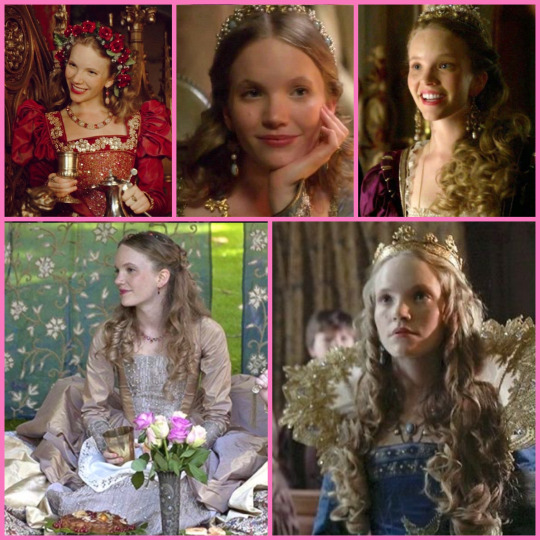
February 13, 1542 Katherine Howard was beheaded RIP🤍
#katherine howard#katherine howard aesthetic#the tudors#queen things#tudor rose#perioddramaedit#period drama#tudorsedit#six wives of henry viii#tudoredit#thetudorsedit#the tudor dynasty#tudor queens#tudor period#tudor england#period edit#period drama junkie#perioddramacentral#perioddramasonly#perioddramasource#periodedit#beheaded cousins#beheaded#six queens#tamzinmerchantedit#tamzin merchant#tudor tag#tudor history#khowardedit#k howard
7 notes
·
View notes
Text
ok this is the most important poll i got for y'all /hj
#house of tudor#tudors#tudor queens#tudor history#tudor period#tudor era#tudor dynasty#tudor tag#elizabeth of york#henry vii#henry vii of england#catherine of aragon#catalina of aragon#anne boleyn#the tudors#the tudor dynasty#jane seymour#anna of cleves#anne of cleves#katheryn howard#catherine howard#katherine howard#katherine parr#catherine parr#lady jane grey#jane grey#9 days queen#mary i#mary i of england#bloody mary
11 notes
·
View notes
Text
A Royal Tudor Dinner Party: Conversations With The Six Wives Of King Henry VIII - Part Two
#dailyprompt#dailyprompt-1999#history#KING HENRY VII#queens#ROYAL HISTORY#tudor dynasty#TUDOR ERA#tudor history#Tudor queens#womens history#world history
1 note
·
View note
Text




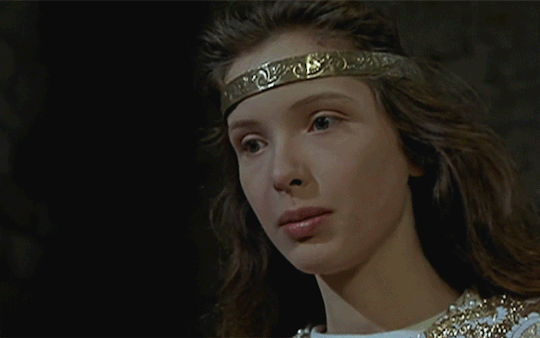


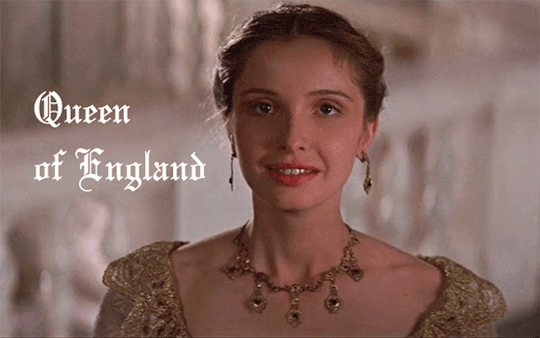
She was beloved by every- one—from the mightiest of diplomats to the lowliest of subjects. During her 17 years as queen, Elizabeth of York was exactly the consort needed by England to help end the ugly, internecine Wars of the Roses. Sometimes, a gracious personality far outweighs the power of the potentate. Elizabeth of York was such a queen. ⎯ Elizabeth of York: Queenship and Power, Arlene Okerlund
#wanted to try something out#she's been my fancast for a time now#edit#perioddramaedit#perioddramagif#elizabeth of york#EoY#julie delpy#fc: julie delpy#fancast: julie delpy#tudor history#tudor queens#historical women#historicalwomendaily#historicaledit#historical dramas#historyedit#tudoredit#*gifs#*gifset#userrias#userriasgifs
247 notes
·
View notes
Text




Katherine of Aragon 🖤
Black ink and watercolour
Follow the full challenge on IG
12 notes
·
View notes
Text










Tom McKay, as Jasper Tudor, in 'The White Queen' (2013).
hello kingdom come deliverance fandom. I still have no idea how to make video game gifs so I bring you my speciality instead; gifs of The Actor in a slightly obscure role from their earlier career where we can all pretend its The Character in an au. Helped by the fact that this is a medieval setting and his character has a romantic connection he can't pursue because of an arranged political marriage so he diverts his devotion into looking after his love's child (who just so happens to be called Henry.)
#anyway this is very; slightly older henry serving as Hans' whatever taking care of his kid as an avuncular stand in parental figure#this character also spends half his time departing on treacherous journeys and yearning in chainmail so. great stuff.#there's some more episodes with a time skip where the hair gets a bit. wild. I've got way more of these so. prepare#I don't usually tweak names in these gifs but. thought it would be fun#and justify me putting this in the kcd tag more 👀#final was between vague 'the battle' or Trotsky but went with Skaltiz for least divine intervention#penultimate was tossup between hans and Radzig#tom mckay#Henry of Skalitz#kingdom come deliverance#The White Queen#Jasper Tudor#my gifs#rook's gifs
505 notes
·
View notes
Text
it's not Henry VIII and his six wives
it's actually Catherine Of Aragon, Anne Boleyn, Jane Seymour, Anne Of Cleves, Catherine Howard and Catherine Parr
six women who were casually married to the same guy
#tudor queens#tudor dynasty#catherine of aragon#anne boleyn#jane seymour#anne of cleves#catherine howard#catherine parr#henry viii
77 notes
·
View notes
Text






ABBIE HERN as PRINCESS ELIZABETH 'BESS' TUDOR in MY LADY JANE (2024)
#save my lady jane#my lady jane#myladyjaneedit#gifs*#mlj#mljedit#myladyjanecentral#elizabeth tudor#elizabeth i#queen elizabeth i of england#princess bess#abbie hern#perioddramasource#perioddramagif#perioddramaedit#tudorerasource#periodedit#wocdaily#usercreate
737 notes
·
View notes
Text




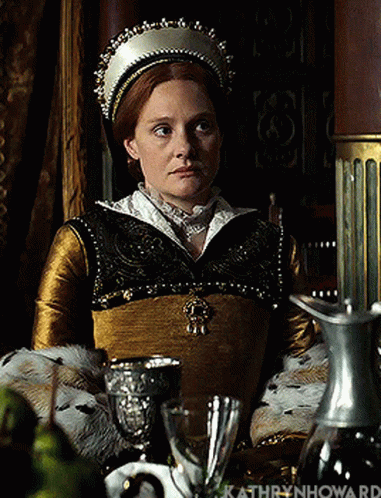
La Peregrina, A Queen Among Jewels Pear-shaped and weighing in at a magnificent 223.8 grains of 55.95 carats, Phillip II of Spain's wedding gift surpassed every fantasy his bride, the newly crowned Mary I of England, could have imagined. Baptized La Peregrina (an expression from the groom's native language meaning "female wanderer"), the brilliant pearl was delivered directly to the queen, its priceless value reflecting the inestimable importance that a marriage treaty between England and Spain represented at the time. Found on the coast of Panama in 1513 by an African slave, the pearl went down in history as a fine adornment much appreciated by royalty. In her well-known official portrait of 1554, Mary is depicted adorned with her wedding present, dangling from a bejeweled brooch on her chest. Queen Margaret, wife of Phillip III of Spain, wore it during celebrations of a peace treaty with the English in 1605. Two of the wives of Phillip IV of Portugal and Spain also had the privilege of wearing it — but the jewel would still pilgrimage through Europe and the world, and would end up not just under the possession of princesses and queens, but of other distinguished personalities. After the end of the 16th and 17th centuries, La Peregrina would be mentioned in the annals of history again only in 1813, when Joseph, brother of Napoleon Bonaparte, filched it along with a significant part of the Spanish Crown Jewels, in his flight from Spain back to France. After the fall of Napoleon in 1815, the pearl's new owner moved to the United States, where he would eventually die and leave it to his nephew, Charles Louis, the future Napoleon III. During his own exile, this time in England, the descendant of the Emperor of the French sold it to the second Duke of Abercorn, and it was actually during this period that the family heirloom received its infamous name. The pearl would remain in the Abercorn family for a century, being briefly lost by falling from its setting twice — first, disappearing between the cushions of a sofa in Windsor Castle; then, during a ball at Buckingham Palace. Fortunately, La Peregrina was found and returned to her owners in both occasions. In 1913 the jewel was cleaned and polished, and as a result, lost approximately 203 grams. Yet it still remains today the largest symmetrical pearl of its shape, and in 1969, after being auctioned at Sotheby's, it once again became a husband's gift to his wife. Richard Burton bought it for $37,000 for his wife, the iconic actress Elizabeth Taylor. Interestingly enough, Taylor decided to adorn her gift with a completely new design, one inspired by none other than the regal portrait of Mary I. Other smaller pearls, emeralds and rubies completed the piece, centering around the glorious Peregrina, now displayed as a Tudor styled choker.
#tudor history#tudor queens#tudor dynasty#history#culture#tudor era#mary i of england#mary tudor#elizabeth taylor#tudorqueens#history facts#queen mary i
66 notes
·
View notes